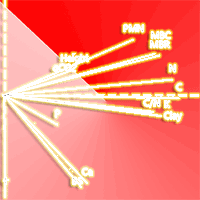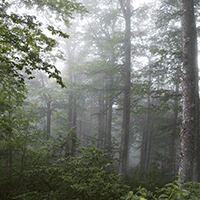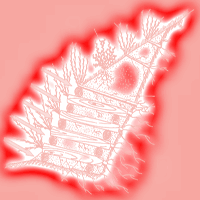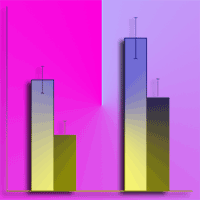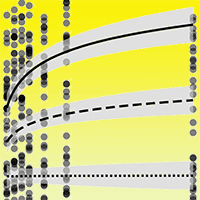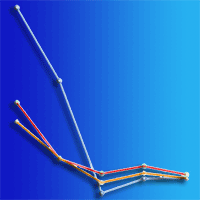Over the last decades, Pinus taeda L. plantations in southern Brazil showed a great increase in average production. However, the gains in productivity obtained by genetic selection and breeding have nowadays stabilized. Research on edaphic factors and silvicultural practices is currently performed with the aim of both increasing the productivity of P. taeda plantations and maintaining the soil quality. To this end, soil microbiological attributes are considered better indicators of soil quality as they are more sensitive than chemical and physical ones. In this study, we aimed to evaluate the relationship between microbial activity and the physical and chemical parameters of different soil types under young Pinus taeda plantations at five different sites in southern Brazil. Soil samples were collected at depths of 0-5 and 5-10 cm. The soil microbiological attributes evaluated were: potentially mineralizable nitrogen (PMN), microbial biomass carbon (MBC), microbial biomass nitrogen (MBN), microbial basal respiration (MBR), and metabolic quotient (qCO2). We also evaluated some physical and chemical soil parameters. Sites with the highest values of C, clay, and nutrients in the soil, showed higher values for the soil microbiological attributes, compared to the other study sites. The previous management with minimal tillage in some sites seems to positively affect soil quality. The MCB and MBR showed better sensitivity in indicating differences between sites and showed a good relationship with clay content, C/N ratio, K, and pH. These results suggest that site-specific characteristics such as soil type or forest management influence soil microbiological attributes in Pinus taeda plantations during initial growth in southern Brazil.
Keywords
, , ,
Citation
Zanon JA, Marques R, Herzog de Carvalho D, Larsen JG, De Souza Kulmann MS, Schumacher MV (2024). Relationship between microbiological, physical, and chemical attributes of different soil types under Pinus taeda plantations in southern Brazil. iForest 17: 29-35. - doi: 10.3832/ifor4349-016
Academic Editor
Maurizio Ventura
Paper history
Received: Mar 14, 2023
Accepted: Nov 03, 2023
First online: Feb 28, 2024
Publication Date: Feb 29, 2024
Publication Time: 3.90 months
© SISEF - The Italian Society of Silviculture and Forest Ecology 2024
Open Access
This article is distributed under the terms of the Creative Commons Attribution-Non Commercial 4.0 International (https://creativecommons.org/licenses/by-nc/4.0/), which permits unrestricted use, distribution, and reproduction in any medium, provided you give appropriate credit to the original author(s) and the source, provide a link to the Creative Commons license, and indicate if changes were made.

Breakdown by View Type
(Waiting for server response...)
Article Usage
Total Article Views: 6848
(from publication date up to now)
Breakdown by View Type
HTML Page Views: 2302
Abstract Page Views: 1799
PDF Downloads: 2464
Citation/Reference Downloads: 1
XML Downloads: 282
Web Metrics
Days since publication: 657
Overall contacts: 6848
Avg. contacts per week: 72.96
Article Citations
Article citations are based on data periodically collected from the Clarivate Web of Science web site
(last update: Mar 2025)
(No citations were found up to date. Please come back later)
Publication Metrics
by Dimensions ©
Articles citing this article
List of the papers citing this article based on CrossRef Cited-by.
(1)
Adam WM, Rodrigues VS, Magri E, Motta ACV, Zambon LM, Lima RLD (2021)Mid-rotation fertilization and liming of
Pinus taeda: growth, litter, fine root mass, and elemental composition. iForest 14: 195-202.
CrossRef |
Gscholar
(2)
Albaugh JM, Blevins L, Allen HL, Albaugh TJ, Fox TR, Stape JL, Rubilar RA (2010)Characterization of foliar macro- and micronutrient concentrations and ratios in loblolly pine plantations in the Southeastern United States. Southern Journal of Applied Forestry 34 (2): 53-64.
CrossRef |
Gscholar
(3)
Albaugh TJ, Fox TR, Rubilar RA, Cook RL, Amateis RL, Burkhart HE (2017)Post-thinning density and fertilization affect
Pinus taeda stand and individual tree growth. Forest Ecology and Management 396: 207-216.
CrossRef |
Gscholar
(4)
Alvares CA, Stape JL, Sentelhas PC, Gonçalves JLM, Sparovek G (2013)Köppen’s climate classification map for Brazil. Meteorologische Zeitschrift 22: 711-728.
CrossRef |
Gscholar
(5)
Anderson T, Domsch K (1993)The metabolic quotient for CO
2 (qCO
2) as a specific activity parameter to assess the effects of environmental conditions, such as pH, on the microbial biomass of forest soils. Soil Biology and Biochemistry 25: 393-395.
CrossRef |
Gscholar
(6)
APHA (1995)Standard methods for the examination of water and wastewater (19th edn). American Public Health Association - American Water Works Association - Water Pollution Control Federation, New York, USA, pp. 541.
Gscholar
(7)
Batista AH, Motta ACV, Reissmann CB, Schneider T, Martins IL, Hashimoto M (2015)Liming and fertilisation in Pinus taeda plantations with severe nutrient deficiency in savanna soils. Acta Scientiarum: Agronomy 37 (1): 117-125.
CrossRef |
Gscholar
(8)
Biesek MF (2012)Indicadores químicos e microbiológicos da qualidade do solo em agrossistemas e sistemas nativos na região dos campos gerais, Castro-PR [Indicators of chemical and microbiology soil quality and system in agrosystems native in the region of general fields, Castro-PR]. Msc dissertation, Soil Science and Agricultural Engineering Department, Federal University of Paraná, Curitiba, PR, Brazil, pp. 50. [in Portuguese]
Gscholar
(9)
Chen B, Liu S, Ge J, Chu J (2010)Annual and seasonal variations of Q10 soil respiration in the sub-alpine forests of the eastern Qinghai-Tibet plateau, China. Soil Biology and Biochemistry 42: 1735-1742.
CrossRef |
Gscholar
(10)
Dobner M, Campoe OC (2019)Meteorological effects on 30-years-grown
Pinus taeda under a gradient of crown thinning intensities in southern Brazil. Forest Ecology Management 453: 117624.
CrossRef |
Gscholar
(11)
Fick SE, Hijmans RJ (2017)WorldClim 2: new 1km spatial resolution climate surfaces for global land areas. International Journal of Climatology 37 (12): 4302-4315.
CrossRef |
Gscholar
(12)
Fine AK, Schmidt MP, Martínez CE (2018)Nitrogen-rich compounds constitute an increasing proportion of organic matter with depth in Oi-Oe-Oa-A horizons of temperate forests. Geoderma 323: 1-12.
CrossRef |
Gscholar
(13)
Fox TR, Allen HL, Albaugh TJ, Rubilar RA, Carlson CA (2007)Tree nutrition and forest fertilization of pine plantations in the southern United States. Southern Journal of Applied Forestry 31 (1): 5-11.
CrossRef |
Gscholar
(14)
Gatiboni LC, Vargas CO, Albuquerque JA, Almeida JA, Stahl J, Chaves DM, Brunetto G, Dall’Orsoletta DJ, Rauber LP (2017)Phosphorus fractions in soil after successive crops of
Pinus taeda L. without fertilization. Ciência Rural 47: 1-8.
CrossRef |
Gscholar
(15)
Gatiboni LC, Da Silva WC, Mumbach GL, Schmitt DE, Iochims DA, Stahl J, Vargas CO (2020)Use of exchangeable and nonexchangeable forms of calcium, magnesium, and potassium in soils without fertilization after successive cultivations with
Pinus taeda in southern Brazil. Journal of Soils and Sediments 20: 665-674.
CrossRef |
Gscholar
(16)
Gonçalves JLM, Mendes KCFS, Sasaki CM (2001)Mineralização de nitrogênio em ecosistemas florestais naturais e implantados do estado de São Paulo [Nitrogen mineralization in natural and forest plantation ecosystem of São Paulo state]. Revista Brasileira de Ciência do Solo 25: 601-616. [in Portuguese]
CrossRef |
Gscholar
(17)
Gonçalves JLM, Wichert MCP, Gava JL, Masetto AV, Arthur Junior JC, Serrano MIP, Mello SLM (2007)Soil fertility and growth of
Eucalyptus grandis in Brazil under different residue management practices. Journal of Southern Hemisphere Earth Systems Science 69: 95-102.
CrossRef |
Gscholar
(18)
Harrison-Kirk T, Beare MH, Meenken ED, Condron LM (2014)Soil organic matter and texture affect responses to dry/wet cycles: changes in soil organic matter fractions and relationships with C and N mineralisation. Soil Biology and Biochemistry 74: 50-60.
CrossRef |
Gscholar
(19)
Heinzmann FX, Miyazava M, Pavan MA (1984)Determinação de nitrato por espectrofotometria de absorção ultravioleta [Nitrate determination by ultraviolet absorption spectrophotometry]. Revista Brasileira de Ciência do Solo 8: 159-163. [in Portuguese]
CrossRef |
Gscholar
(20)
IBA (2021)Relatório anual [Annual Report of the Brazilian Tree Industry]. Industria Brasileira de Árvores, Brazil, pp. 117. [in Portuguese]
Online |
Gscholar
(21)
Joergensen RG, Emmerling C (2006)Methods for evaluating human impact on soil microorganisms based on their activity, biomass, and diversity in agricultural soils. Journal of Plant Nutrition and Soil Science 169: 295-309.
CrossRef |
Gscholar
(22)
Kondo YR, Kaschuk G, Cruz SP (2021)Inoculation of plant growth-promoting bacteria in
Pinus taeda seedlings. Agropecuária Catarinense 34: 93-98.
CrossRef |
Gscholar
(23)
Kuzyakov Y, Horwath WR, Dorodnikov M, Blagodatskaya E (2019)Review and synthesis of the effects of elevated atmospheric CO
2 on soil processes: no changes in pools, but increased fluxes and accelerated cycles. Soil Biology and Biochemistry 128: 66-78.
CrossRef |
Gscholar
(24)
Lee KH, Jose S (2003)Soil respiration, fine root production, and microbial biomass in cottonwood and loblolly pine plantations along a nitrogen fertilization gradient. Forest Ecology Management 185 (3): 263-273.
CrossRef |
Gscholar
(25)
López-Poma R, Pivello VR, Brito GS, Bautista S (2020)Impact of the conversion of Brazilian woodland savanna (Cerradão) to pasture and
Eucalyptus plantations on soil nitrogen mineralization. Science of the Total Environment 704: 135397.
CrossRef |
Gscholar
(26)
Lu T, Wang Y, Zhu H, Wei X, Shao M (2020)Drying-wetting cycles consistently increase net nitrogen mineralization in 25 agricultural soils across intensity and number of drying-wetting cycles. Science of the Total Environment 710: 135574.
CrossRef |
Gscholar
(27)
Manirakiza E, Ziadi N, Luce MS, Hamel C, Antoun H, Karam A (2019)Nitrogen mineralization and microbial biomass carbon and nitrogen in response to co-application of biochar and paper mill biosolids. Applied Soil Ecology 142: 90-98.
CrossRef |
Gscholar
(28)
Mckenzie J, Goldman R (1999)The student edition of Minitab for Windows manual. Addison-Wesley Longman, Inc., CA, USA, web site. [in Portuguese]
Online |
Gscholar
(29)
Miller AE, Schimel JP, Meixner T, Sickman JO, Melak JM (2005)Episodic rewetting enhances carbon and nitrogen release from chaparral soils. Soil Biology and Biochemistry 37: 2195-2204.
CrossRef |
Gscholar
(30)
Monz CA, Reuss DE, Elliott ET (1991)Soil microbial biomass carbon and nitrogen estimates using 2450 MHz microwave irradiation or chloroform fumigation followed by direct extraction. Agriculture, Ecosystems and Environment 34: 55-63.
CrossRef |
Gscholar
(31)
Moro L, Gatiboni LC, Simonete MA, Cassol PC, Chaves DM (2014)Response of one-, five-, and nine-year-old
Pinus taeda to NPK fertilization in southern Brazil. Revista Brasileira de Ciência do Solo 38: 1181-1189.
CrossRef |
Gscholar
(32)
Norman RJ, Stucki JW (1981)The determination of nitrate and nitrite in soil extracts by ultraviolet spectrophotometry. Soil Science Society of America Journal 45: 347-353.
CrossRef |
Gscholar
(33)
R Development Core Team (2019)R: a language and environment for statistical computing. R Foundation for Statistical Computing, Vienna, Austria.
Online |
Gscholar
(34)
Rodriguez DRO, Andrade GC, Jurado Bellote AFJ, Tomazello Filho M (2018)Effect of pulp and paper mill sludge on the development of 17-year-old loblolly pine (
Pinus taeda L.) trees in Southern Brazil. Forest Ecology and Management 422: 179-189.
CrossRef |
Gscholar
(35)
Romeo F, Settineri G, Sidari M, Mallamaci C, Muscolo A (2020)Responses of soil quality indicators to innovative and traditional thinning in a beech (
Fagus sylvatica L.) forest. Forest Ecology and Management 465: 118106.
CrossRef |
Gscholar
(36)
Santos KF, Reichert JM (2022)Best tillage practices for
Eucalyptus growth and productivity: a review on the Brazilian experience. Revista Brasileira de Ciência do Solo 46: e0210091.
CrossRef |
Gscholar
(37)
Samuelson L, Johnsen K, Stokes T (2004)Production, allocation and stemwood growth efficiency of
Pinus taeda L. stands in response to 6 years of intensive management. Forest Ecology and Management 192: 59-70.
CrossRef |
Gscholar
(38)
Samuelson L, Mathew R, Stokes T, Feng Y, Aubrey D, Coleman M (2009)Soil and microbial respiration in a loblolly pine plantation in response to seven years of irrigation and fertilization. Forest Ecology and Management 258: 2431-2438.
CrossRef |
Gscholar
(39)
Sixel RMM, Arthur Junior JC, Gonçalves JLM, Alvares CA, Andrade GRP, Azevedo AC, Stahl J, Moreira AM (2015)Sustainability of wood productivity of
Pinus taeda based on nutrient export and stocks in the biomass and in the soil. Revista Brasileira de Ciência do Solo 39: 1416-1427.
CrossRef |
Gscholar
(40)
Soil Survey Staff (1999)Soil taxonomy. A basic system of soil classification for making and interpreting soil surveys (2nd edn). Agriculture Handbook Number 436, USDA Natural Resources Conservation Service, US Government Printing Office, Washington, DC, USA, pp. 886.
Online |
Gscholar
(41)
Tulio RH, Rachwal MFG, Zanatta JA, Silva K, Kaschuk G (2022)Physical, chemical and microbiological soil attributes influence soil greenhouse gases fluxes in Atlantic Forest and pine (
Pinus taeda) plantations in Brazil. Soil Use and Management 39: 183-197.
CrossRef |
Gscholar
(42)
Veloso MG, Cecagno D, Bayer C (2019)Legume cover crops under no-tillage favor organomineral association in microaggregates and soil C accumulation. Soil and Tillage Research 190: 139-146.
CrossRef |
Gscholar
(43)
Vose JM, Allen HL (1988)Leaf area, stemwood growth and nutrition relationships in loblolly pine. Forest Science 34: 547-563.
CrossRef |
Gscholar
(44)
Ward EJ, Domec JC, Laviner MA, Fox TR, Sun G, McNulty S, King J, Noormets A (2015)Fertilization intensifies drought stress: water use and stomatal conductance of
Pinus taeda in a midrotation fertilization and throughfall reduction experiment. Forest Ecology and Management 355: 72-82.
CrossRef |
Gscholar
(45)
Waring SA, Bremner JM (1964)Ammonium production in soil under waterlogged conditions as an index of nitrogen availability. Nature 201: 951-952.
CrossRef |
Gscholar
(46)
Yao X, Zheng W, Zeng H, Wang W (2020)Soil microbial attributes along a chronosequence of scots pine (
Pinus sylvestris var.
mongolica) plantations in northern China. Pedosphere 30 (4): 60329.
CrossRef |
Gscholar
(47)
Zucon A, Dominschek R, Motta ACV (2020)Can fertilization and liming affect the amount of litter and roots on
Pinus taeda forest floor? Scientia Forestalis 48: (128) e3193.
CrossRef |
Gscholar
